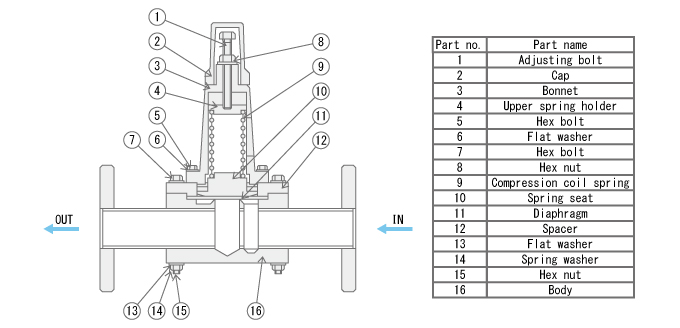Basics|Precision pumping technology 2-5. Pulsation: Back Pressure Valve
A back pressure valve is a large anti-siphon check valve that can also adjust pressure.
While general anti-siphon check valves are small and easy-to-use, there is a limit to how much fluid can be passed. Excessive amounts of fluid may end up causing significant pressure loss (increased pressure). The springs used in standard anti-siphon check valves are also small, which limits their pressure setting to 0.1 to 0.2 MPa.
Accordingly, a back pressure valve is used for pumps with relatively large capacity. Back pressure valves are not only used for large-capacity pumps, but also effectively adoptable in small-capacity applications that have an inertial resistance of over 0.2 MPa.

- In general, a back pressure valve can adjust the back pressure in the range of 0.1 to 0.3 MPa, as long as the sum of the inertial resistance and the back pressure valve's set pressure does not exceed the pump's maximum allowable pressure. In practice, the pressure drops the moment the back pressure valve opens--however, this pressure loss at the valve is also considered.
- Although back pressure valves are effective in preventing overfeeding and siphoning, do not use them as check valves for high-pressure tanks. In such applications, put in place a dedicated check valve on the secondary side (high-pressure tank side) of the back pressure valve.
- Anti-siphon check valves and back pressure valves are structurally vulnerable to dirt, lint, and other foreign matter. Such foreign matter may cause clogging in the valve, which can result in extreme pressure increases and disabling of the siphoning protection features.

TACMINA's Smoothflow Pump is a diaphragm pump with no pulsation, which relieves it from the impact of inertial resistance. Be completely free from the problem of overfeeding.
More...


